Africa Twin Engine Management Electronics
Throttle By Wire (TBW) brings with it 3 rider modes to tailor engine character and traction
The riding modes are comprised of different levels of Power (P), Engine Braking (EB) and Honda Selectable Torque Control (HSTC)
HSTC now has 7 levels and OFF
The Africa Twin Adventure Sports’ 998cc SOHC 8-valve parallel-twin engine’s 2018 upgrade sees it receive Throttle By Wire (TBW) plus riding modes and expanded Honda Selectable Torque Control (HSTC).
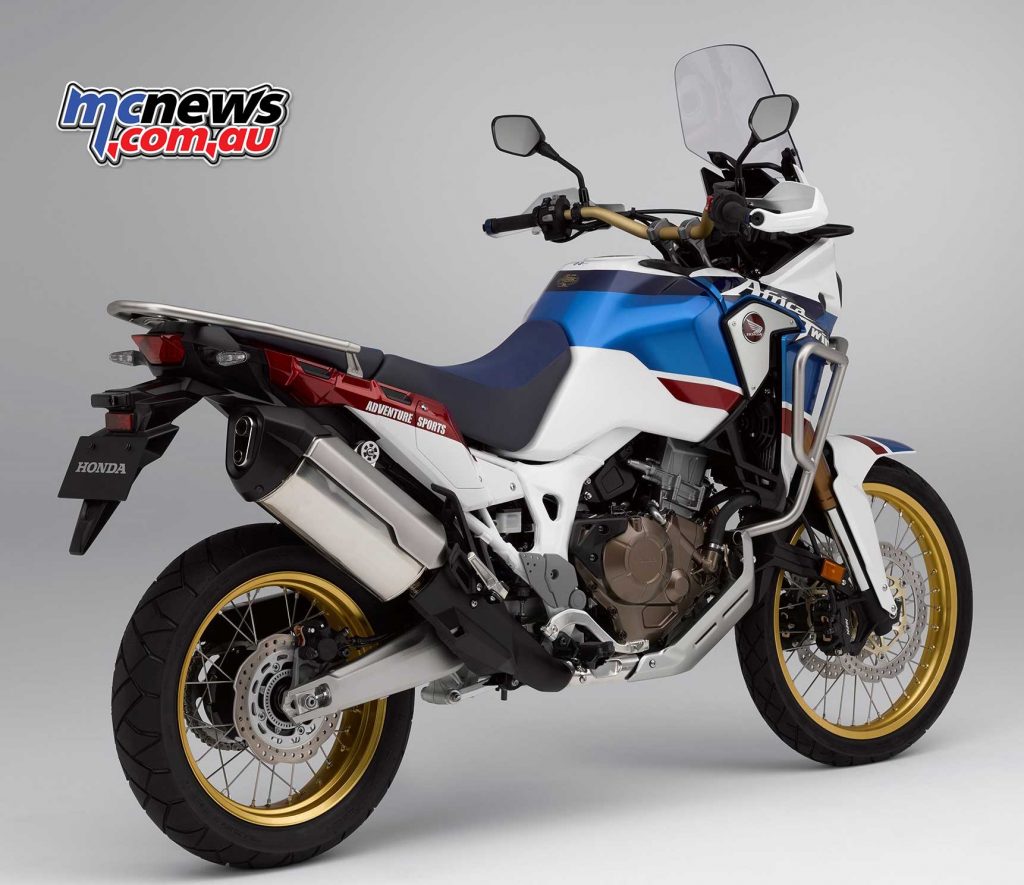
The use of TBW greatly expands the choices available to the rider to manage engine output, feel and rear wheel traction to suit different riding conditions. Whereas the 2017 Africa Twin had 3 Levels of HSTC, plus OFF, the new system features 7 Levels – from Level 1, for aggressive riding off-road on block pattern tyres, to Level 7 for maximum sense of security on slippery, wet tarmac. It remains possible to turn HSTC completely OFF.
There are also 3 levels of Power and Engine Braking available.
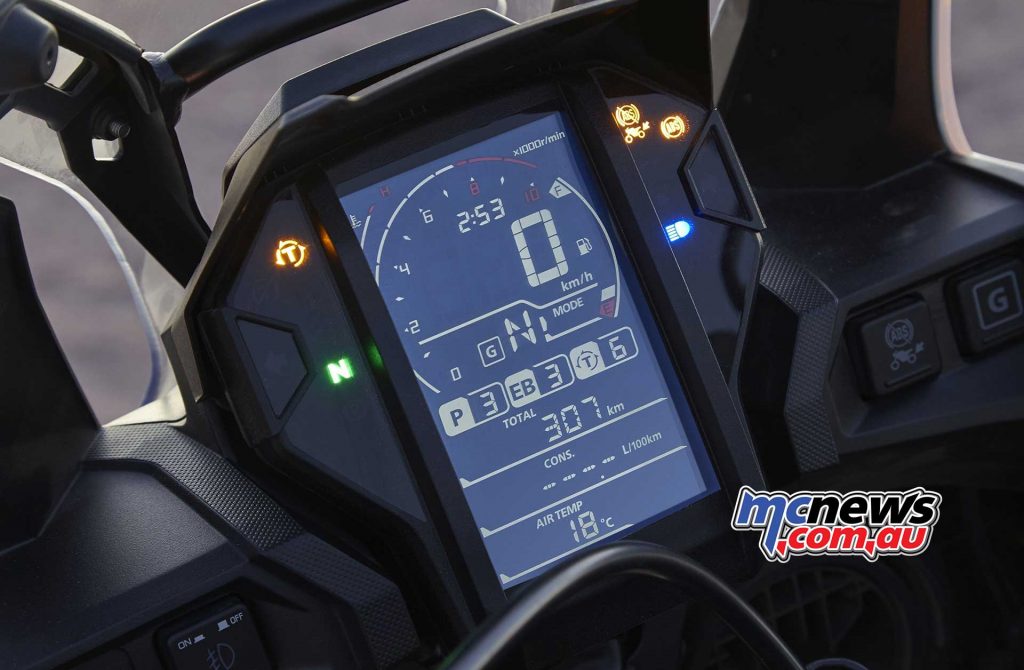
In a set-up first used on the RC213V-S – Honda’s street legal version of its MotoGP racer – three riding modes offer pre-set combinations of each parameter, suitable to different riding environments and scenarios:
TOUR employs the maximum Power (1), mid-range Engine Braking (2) and high HSTC (6).
URBAN uses mid-level Power (2) and Engine Braking (2) and high HSTC (6).
GRAVEL mode allows the lowest level of Power (3) and EB (3) with high HSTC (6).
A fourth mode – USER – allows the rider to set and save his or her preferred combination of Power, EB and HSTC levels. Both riding mode and level of HSTC can be changed at anytime using the controls on the left hand switchgear.
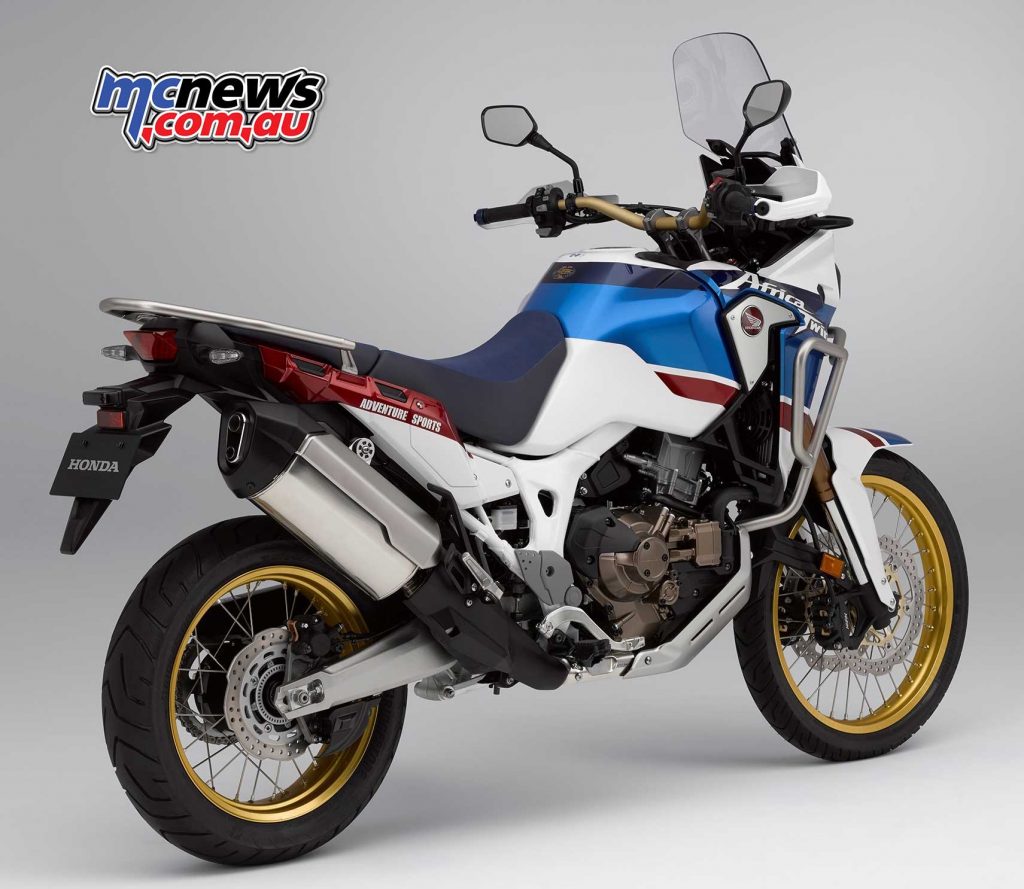
Africa Twin Engine
- New intake design and exhaust aid mid-range response
- New exhaust also designed to improve engine note
- New lighter balance shaft weight
- New lithium-ion battery saves 2.3 kg and enhances durability
- Power is smooth and consistent, with linear torque delivery
- Assist/slipper clutch helps upshifts and downshifts
Alongside the new engine management electronics for 2018, the airbox now features a 20mm longer funnel length, matched with redesigned exhaust internals to significantly boost mid-range response and sound. The 2-1 downpipe now feeds gas flow through two catalysers (rather than one) into a simplified, smaller volume (4.6L to 4L) muffler that houses two chambers rather three.
Peak power of 70Kw still arrives @ 7,500rpm, with 99Nm torque @ 6,000rpm. Bore and stroke are set at 92 x 75.1mm, with compression ratio of 10.0:1; the 270° phased crankshaft and uneven firing interval create the engine’s distinctive throb and feel for rear wheel traction.
Good ground clearance – crucial to off-road performance – starts with a compact, short engine. So the crankcases are split vertically; the water pump is housed within the clutch casing with a thermostat integrated into the cylinder head. Manual and DCT versions of the engine share common crankcases with only minor external differences. The water and oil pumps are driven by the engine’s balancer shafts; for 2018 300g has been shaved from the balance weight, reducing inertia by 306g/cm2, further adding to the character and feel of the power delivery.
Four-valve cylinder heads, fed by PGM-FI fuel injection, each employ twin spark plugs and dual and sequential ignition control for even combustion. Honda’s SOHC Unicam valve train is a feature of the CRF450R and the low-set position of the cast camshaft contributes to the compact nature of the cylinder head. The inlet valves are 36.5mm in diameter, the exhaust valves 31mm.
The engine uses a semi-dry sump and in-tank lower crankcase oil storage. This allows a lower pan depth, reducing overall engine height. As the pressure-fed pump is located within the tank where it delivers its oil from, there is no need for a pressure-feed passage; again saving weight and space.
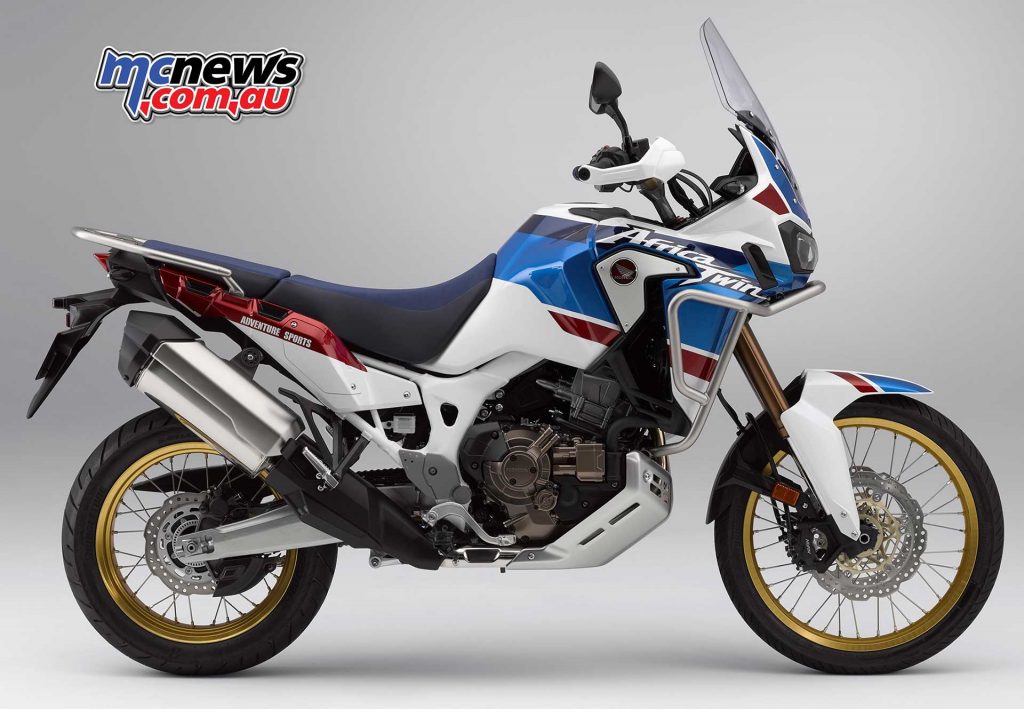
Secondary vibrations are neutralised by the mutually reciprocating motion of the pistons, while primary inertial and coupling vibrations are cancelled by the use of biaxial balance shafts. The front balancer shaft uses two weights, the rear only a single weight in order to save weight.
The aluminium clutch centre and pressure plate use ‘assist’ cams to ease upshift and downshift (with light lever feel) and ‘slipper’ cams for deceleration and downshifting. The six-speed gearbox uses ‘pierced’ shape dogs for 1st, 2nd, 3rd and 4th gear, allowing use of a smaller, lighter clutch. Oil gathering ribs on the main journal side of the primary gear ensure consistent lubrication for the gear, damper spring and primary sub-gear.
The lightweight six-speed manual gearbox uses the same shift-cam design as found on the CRF450R to ensure positive changes, and is equipped with an aluminium assist slipper clutch.
New for 2018 a lithium-ion battery is 2.3kg lighter than the lead unit of the 2017 Africa Twin, and offers greater longevity, both in terms of life and the ability to hold onto a charge when left.
A quickshifter is available as an optional extra.
Dual Clutch Transmission (DCT)
Super-fast, seamless gear changes in Manual Transmission (MT) or Automatic D mode
S mode (with 3 levels) revs higher and downshifts sooner, for aggressive riding
G switch improves rear wheel traction when off-road
Incline detection adapts shift pattern depending on road gradient
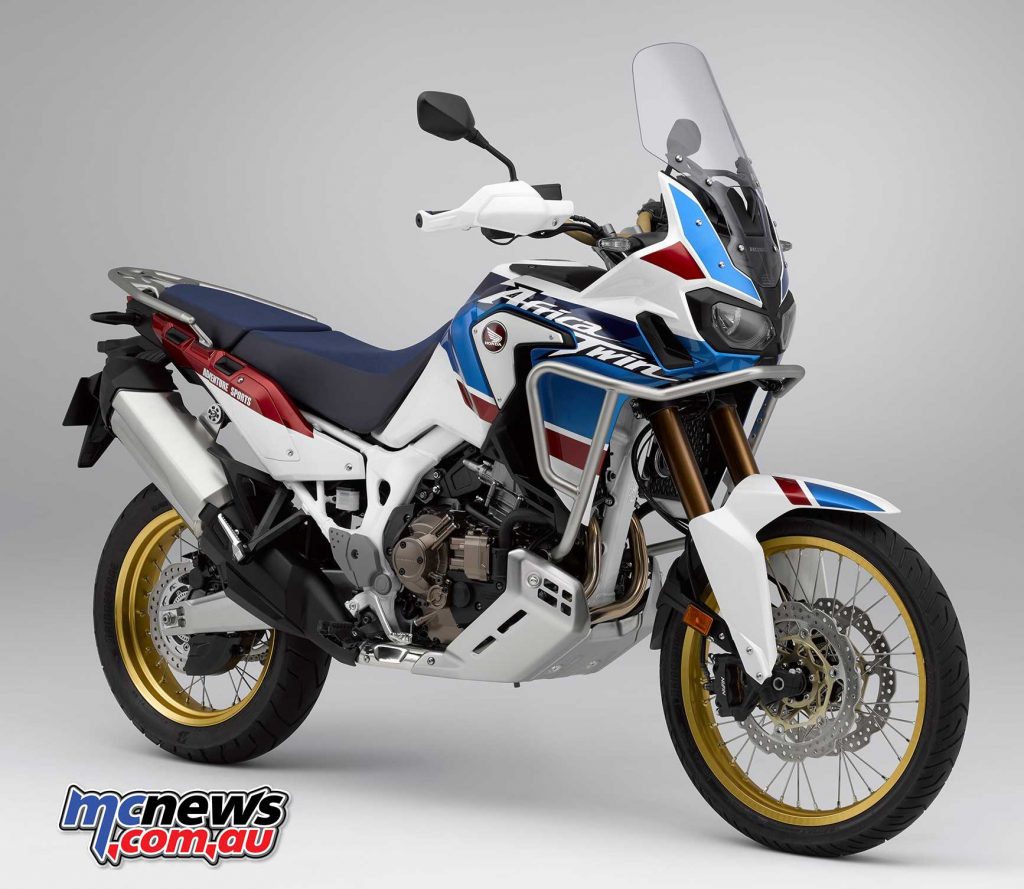
Honda’s unique DCT delivers consistent, super-fast seamless gear changes, and very quickly becomes second nature in use. It uses two clutches: one for start-up and 1st, 3rd and 5th gears: the other for 2nd, 4th and 6th, with the mainshaft for each clutch located inside the other for compact packaging.
Each clutch is independently controlled by its own electro-hydraulic circuit. When a gear change occurs, the system pre-selects the target gear using the clutch not currently in use. The first clutch is then electronically disengaged as, simultaneously, the second clutch engages.
The result is a consistent, fast and seamless gear change. Furthermore, as the twin clutches transfer drive from one gear to the next with minimal interruption of the drive to the rear wheel, any gear change shock and pitching of the machine is minimised, making the change feel direct as well as smooth.
The extra benefits of durability (as the gears cannot be damaged by missing a gear) impossibility of stalling, low stress urban riding and reduced rider fatigue add to the DCT’s appeal
Three modes of operation are available. MT mode gives full manual control, allowing the rider to shift with the handlebar trigger control buttons. Automatic D mode is ideal for city and highway riding, and achieves optimum fuel efficiency. Automatic S mode offers three levels of sportier riding, as the ECU lets the engine rev a little higher before shifting up, and shifts down sooner when decelerating for extra engine braking.
In either D or S mode, DCT offers immediate manual intervention if required – the rider simply selects the required gear using the up and down shift triggers on the left handlebar. At an appropriate time DCT seamlessly reverts back to automatic mode, depending on throttle angle, vehicle speed and gear position.
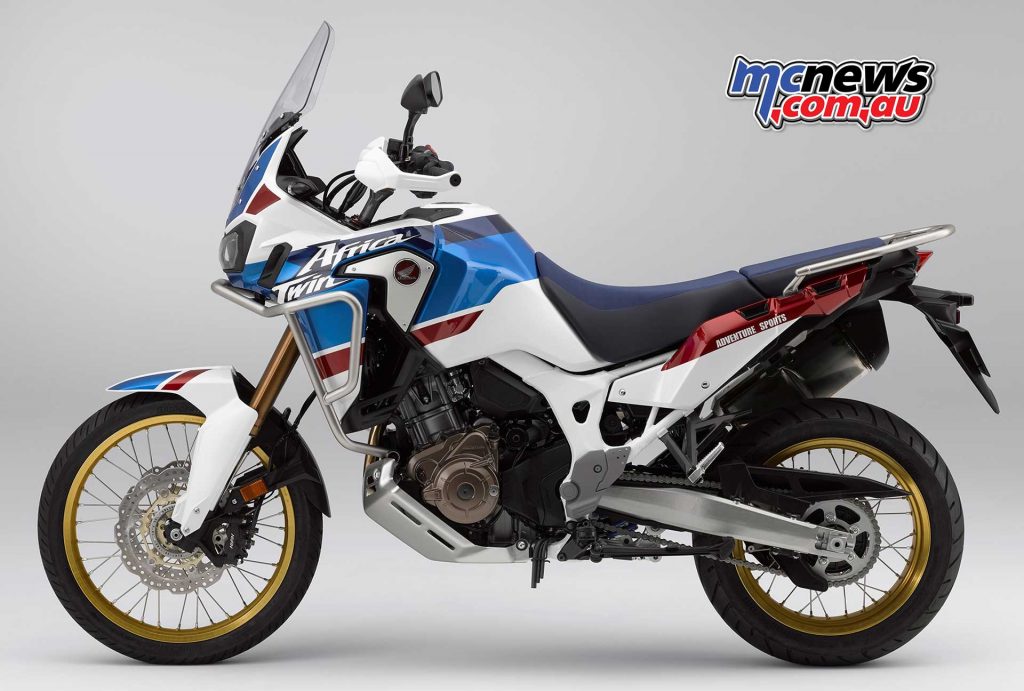
DCT for the Africa Twin is also fully equipped to operate in an adventure environment, with off-road functionality enhanced by the G switch positioned on the right side of the instrument panel. Pushing the G switch in any riding mode improves traction and machine control by reducing the amount of clutch slip during gear changes.
Further functionality for the DCT system comes in the form of incline detection, by means of which the gear shift pattern is adapted depending on the grade of an incline to provide optimum control.
Accessories
A full range of genuine Honda accessories are available for the CRF1000L Africa Twin Adventure Sports, including:
- Touring bags
- Rubber pillion footpegs
- DCT foot shifter
- Fog lamps
- Wheel stripes
- Alarm system.
- Centre stand
- Sump guard
- Two types of lower seat
- Quickshifter
- Tank Bag
Technical Specifications
- Engine – 998cc Liquid-cooled 4-stroke 8-valve parallel twin with 270° crank and uni-cam
- Bore & Stroke – 92.0 x 75.1mm
- Max. Power Output – 70kW/7,500rpm (95/1/EC)
- Max. Torque – 99Nm/6,000rpm (95/1/EC)
- Fuel Capacity – 24.2 litres
- Clutch MT: Wet, multiplate with coil springs, Aluminium Cam Assist and Slipper clutch
- Clutch DCT: 2 Wet multiple clutches
- Gearbox – Constant mesh 6-speed MT / 6-speed DCT with on and off-road riding modes
- Final Drive – O-ring sealed chain
- Frame – Steel semi-double cradle type with high-tensile strength steel rear subframe
- Dimensions (L x W x H) – 2,340 x 930 x 1,570mm
- Wheelbase – 1,580mm
- Seat Height (STD position / Low position) – 900/920mm
- Ground Clearance – 270mm
- Kerb Weight – 243 kg (MT), 253kg (DCT)
- Turning Radius – 2.6m
- Front Suspension – Showa 45mm cartridge-type inverted telescopic fork with hydraulic dial-style preload and damping (compression & rebound) adjuster, 252mm stroke, 224mm axle travel
- Rear Suspension – Monoblock cast aluminium swing arm with Pro-Link with gas-charged damper, hydraulic dial-style preload adjuster and rebound damping adjustment, 240 mm rear wheel travel, 101 mm stroke
- Rims – Wire spoke with aluminium rim – 21M/C x MT2.15 (F) – 18M/C x MT4.00 (R)
- Tyres 90/90-21 tube type (F), 150/70-R18 (R)
- Front Brakes – 310mm dual wave floating hydraulic disc with aluminium hub and radial fit 4-piston calipers and sintered metal pads – 2-Channel with rear ABS off switch
- Rear Brakes – 256mm wave hydraulic disc with 1-piston caliper and sintered metal pads. Also Lever-Lock Type Parking Brake System on DCT model with additional slide type 1-piston caliper
- Instruments – Rally style negative LCD instrument display including: Riding Modes, Speedometer, Tachometer, Fuel, Gear position, ABS, HSTC, Odometer, Trip and Clock
- Available
- MLP – CRF1000L Manual $17,499
- MLP – CRF1000L Adventure-Sports Manual $19,499
- MLP – CRF1000L Adventure-Sports DCT $19,999
All specifications are provisional and subject to change without notice.
** Please note that the figures provided are results obtained by Honda under standardised testing conditions prescribed by WMTC. Tests are conducted on a rolling road using a standard version of the vehicle with only one rider and no additional optional equipment. Actual fuel consumption may vary depending on how you ride, how you maintain your vehicle, weather, road conditions, tire pressure, installation of accessories, cargo, rider and passenger weight, and other factors.[/vc_column_text][/vc_column][/vc_row]























